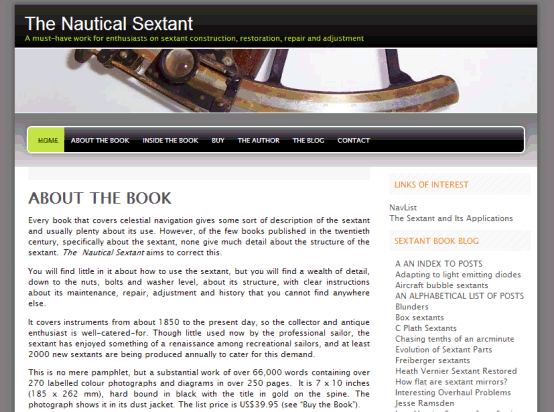
NavList:
A Community Devoted to the Preservation and Practice of Celestial Navigation and Other Methods of Traditional Wayfinding
From: Frank Reed
Date: 2023 Dec 4, 19:50 -0800
Sean C, you wrote (quoting Gray's book):
"Working the sight is not complicated, but it has some traps. There are two ways to find Ho. The one the author likes better is:
(a) Apply the normal I.C. and dip corrections to Hs.
(b) Subtract the result from 180°
(c) If it looked like a normal sun or moon LL sight, apply the UL corrections, and vice versa. For a star or planet, apply the normal refraction correction for the actual altitude."
Exactly. That's what I was getting at in my post. You have to do to the dip correction before subtracting from 180°. Otherwise, after that, it's straight-forward. I think it's helpful when thinking through a backsight to picture (and maybe draw a picture of) a case where the observer is standing on an imaginary tower something like 60 nautical miles high. From way up there, the dip is on the order of 10° (and you can just go with that value for the sake of argument). Then when you picture it/draw it, it's easier to see that the dip has to come out first.
You mentioned that Gray suggested that there is a second way to work a backsight. There are different ways of doing the "accounting" on a sight, but it's all the same in the end.
Probably the most important practical concern with a backsight is understanding what to expect when swinging the arc. The whole thing is like a mirror image. So when you rotate the sextant --critically, as always, keeping the star centered in the field of view-- you find that the arc "swings" under the horizon. The star will rise from below the horizon on the left... approach or cross the horizon near the middle alignment... and then drop below the horizon again on the right. You then adjust until that swinging arc just barely touches the horizon, from below, at the center.
When would you use a backsight? I can think of two good scenarios:
- the classic: you're sailing near a coast that's too "messy" for a dip short.
- maybe more useful: you have a somewhat uncertain horizon, from haze or from glare or from suspicions of anomalous refraction (how?), and you can average the direct and backsight altitudes.
Frank Reed






